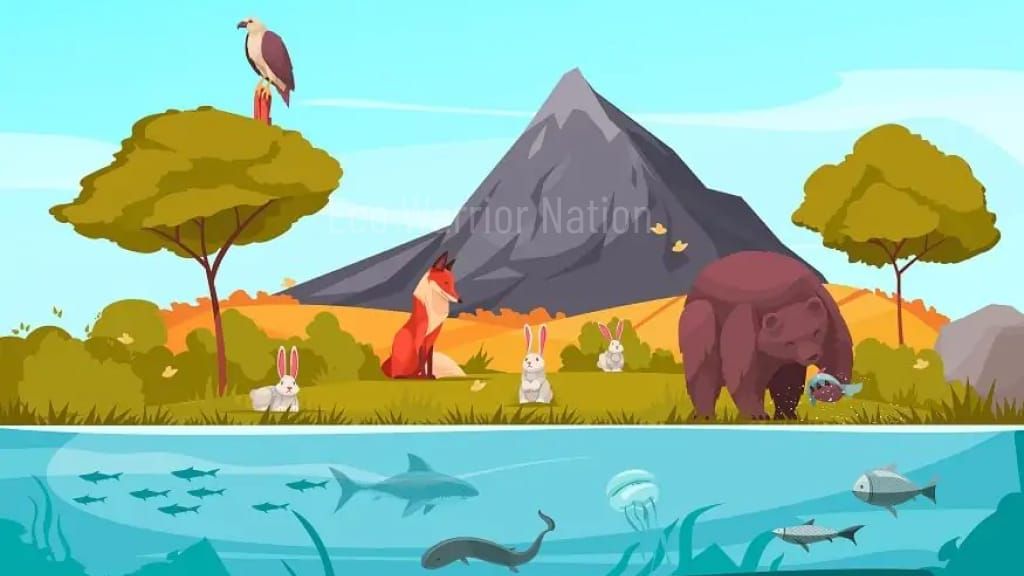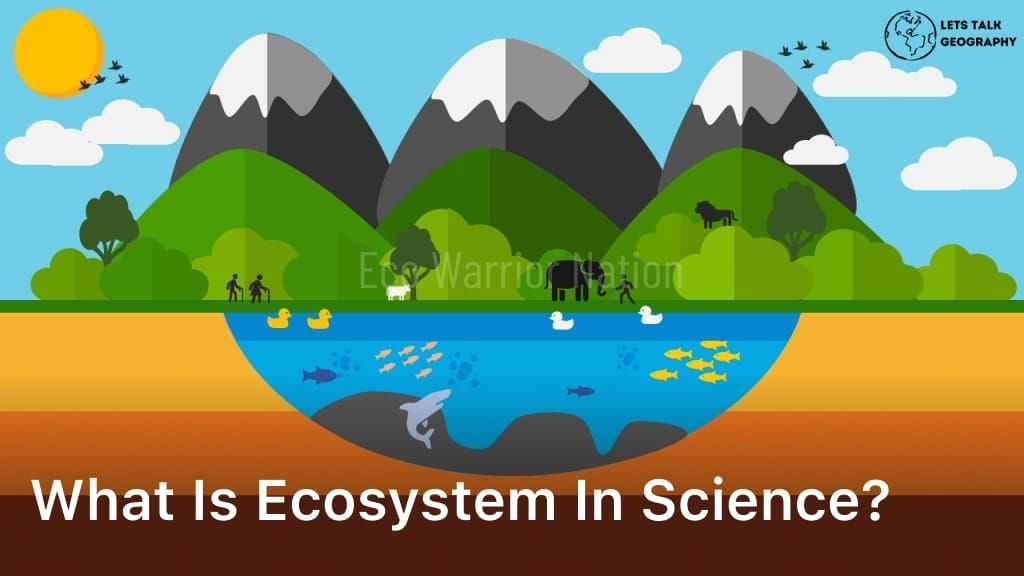Welcome to this introductory guide on ecosystems in science! In this section, we will explore the fascinating world of ecosystems and their significance in scientific research. Ecosystems form the basis of our understanding of how the natural world functions and sustains itself. By studying ecosystems, scientists gain valuable insights into the complex interactions and balance within nature’s networks.
So, what exactly is an ecosystem in science? An ecosystem refers to a community of living organisms, such as plants, animals, and microorganisms, that interact with each other and their non-living environment. These non-living elements include air, water, soil, and sunlight, which are essential for supporting life within an ecosystem. Understanding the components of an ecosystem is crucial to comprehending the intricate web of life and the delicate equilibrium it maintains.
We’ll delve deeper into the components of an ecosystem and explore the various interactions and relationships within them. Through concepts like food chains, food webs, and symbiotic relationships, we will discover how organisms depend on each other for survival. This knowledge allows scientists to gain a better understanding of the interconnections that sustain life in nature.
So, join us as we embark on this exciting journey into the world of ecosystems in science. By the end, you’ll appreciate the rich complexity of nature and its vital role in scientific research.
Table of Contents
ToggleThe Components of an Ecosystem
In the study of science, an ecosystem is a complex web of interactions that occurs between living organisms and their environment. To fully understand the functioning of an ecosystem, it is crucial to examine its various components. These components can be broadly classified into two categories: living organisms and non-living elements.
Living Organisms
The first component of an ecosystem is the diverse range of living organisms that inhabit it. These include plants, animals, and microorganisms. Plants are the primary producers in an ecosystem, utilizing sunlight and converting it into energy through the process of photosynthesis. They form the foundation of the food chain and provide essential nourishment for other organisms.
Animals, on the other hand, occupy various trophic levels within the ecosystem. They consume plants or other animals for energy and nutrients. This interdependent relationship forms intricate food chains and food webs, illustrating the flow of energy through the ecosystem.
Microorganisms, although often unnoticed, play a vital role in ecosystem dynamics. They decompose organic matter, recycle nutrients, and help maintain the balance of the ecosystem. Additionally, microorganisms also engage in symbiotic relationships with other organisms, further enhancing the complexity of ecological interactions.
Non-living Elements
In addition to living organisms, non-living elements form an integral part of the ecosystem. These elements include air, water, soil, and sunlight. Air provides oxygen for respiration and serves as a medium for dispersal of gases. Water, a precious resource, is essential for the survival of all organisms and supports a wide range of aquatic ecosystems.
Soil acts as a reservoir for nutrients and provides a medium for plant growth. It serves as a habitat for various organisms, including decomposers and burrowing animals. Sunlight, the primary source of energy, is essential for photosynthesis and drives the functioning of the ecosystem.
Understanding these components and their interconnections is crucial for comprehending the intricate balance and functionality of an ecosystem. By studying the complex relationships between living organisms, such as plants, animals, and microorganisms, and the non-living elements, scientists gain insights into the intricate workings of nature’s networks.
Interactions and Relationships within an Ecosystem

In the intricate web of an ecosystem, organisms rely on each other for survival and create a delicate balance. Let’s explore the fascinating interactions and relationships that occur within ecosystems.
Food Chains
A food chain is a linear sequence that illustrates the flow of energy as organisms consume each other. It begins with producers, such as plants, which convert sunlight into energy through photosynthesis. Herbivores consume the plants, and then carnivores feed on herbivores, forming a chain of energy transfer. Understanding food chains helps scientists trace the flow of nutrients and energy within ecosystems.
Food Webs
While food chains demonstrate simple energy flow, ecosystems are more complex, and food webs reflect this complexity. Food webs are interconnected networks of multiple food chains that illustrate the feeding relationships between organisms. They show the interconnectedness of species and how disruptions in one part of the web can impact the entire ecosystem.
Symbiotic Relationships
In an ecosystem, some species rely on close relationships with others to survive, giving rise to symbiotic relationships. These interactions can be mutually beneficial (mutualism), where both species benefit, or one-sided (parasitism or commensalism), where one species benefits while the other remains unaffected or is harmed. Symbiotic relationships play a vital role in maintaining ecosystem stability by enabling species to coexist and adapt.
By studying these interactions and relationships within ecosystems, scientists gain valuable insights into the delicate balance that exists in nature. Understanding how organisms depend on each other enhances our understanding of how ecosystems function and adapt. The intricate web of interactions within an ecosystem truly showcases the interconnectedness and resilience of nature.
Conclusion
In conclusion, ecosystems in science play a pivotal role in understanding the intricate balance of nature’s networks. By studying the components, interactions, and relationships within an ecosystem, scientists gain valuable insights into how the natural world functions and sustains itself.
Ecosystems are composed of a diverse range of living organisms, including plants, animals, and microorganisms, as well as non-living elements like air, water, soil, and sunlight. These components work together in intricate ways, forming complex networks of dependencies and interconnections.
By unraveling these interactions, scientists can develop a deeper appreciation for the beauty and complexity of the natural world. Ecosystems provide a foundation for scientific research and offer valuable insights into conservation efforts, climate change, and the delicate balance that sustains life on Earth.
FAQ
What is an ecosystem in science?
An ecosystem in science refers to a complex network of living organisms and their environment. It encompasses both the biological and physical aspects of the natural world, including interactions between organisms and their surroundings.
What are the components of an ecosystem?
The components of an ecosystem include living organisms, such as plants, animals, and microorganisms, as well as non-living elements, such as air, water, soil, and sunlight. These components work together to create a balanced and functioning ecosystem.
How do organisms interact within an ecosystem?
Organisms interact within an ecosystem through various relationships and dependencies. This includes the transfer of energy through food chains and food webs, as well as symbiotic relationships where two species rely on each other for survival. These interactions play a critical role in maintaining the equilibrium and biodiversity within ecosystems.
Why are ecosystems important in scientific study?
Ecosystems are crucial in scientific study because they provide a foundation for understanding the interconnectedness of life on Earth. By studying ecosystems, scientists gain insights into how ecosystems function, adapt, and respond to changes. This knowledge helps inform conservation efforts and sustainable practices to protect our planet’s biodiversity.











